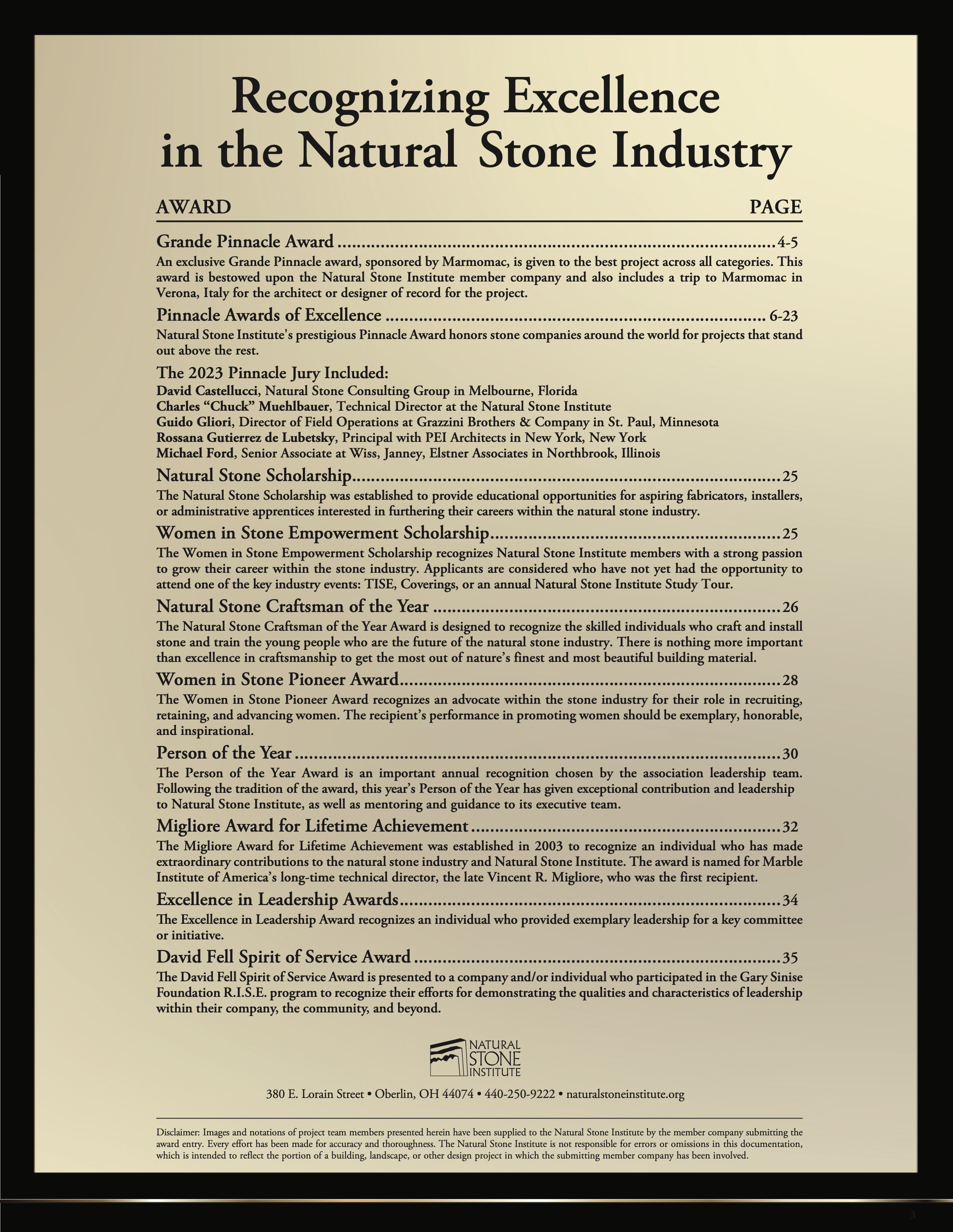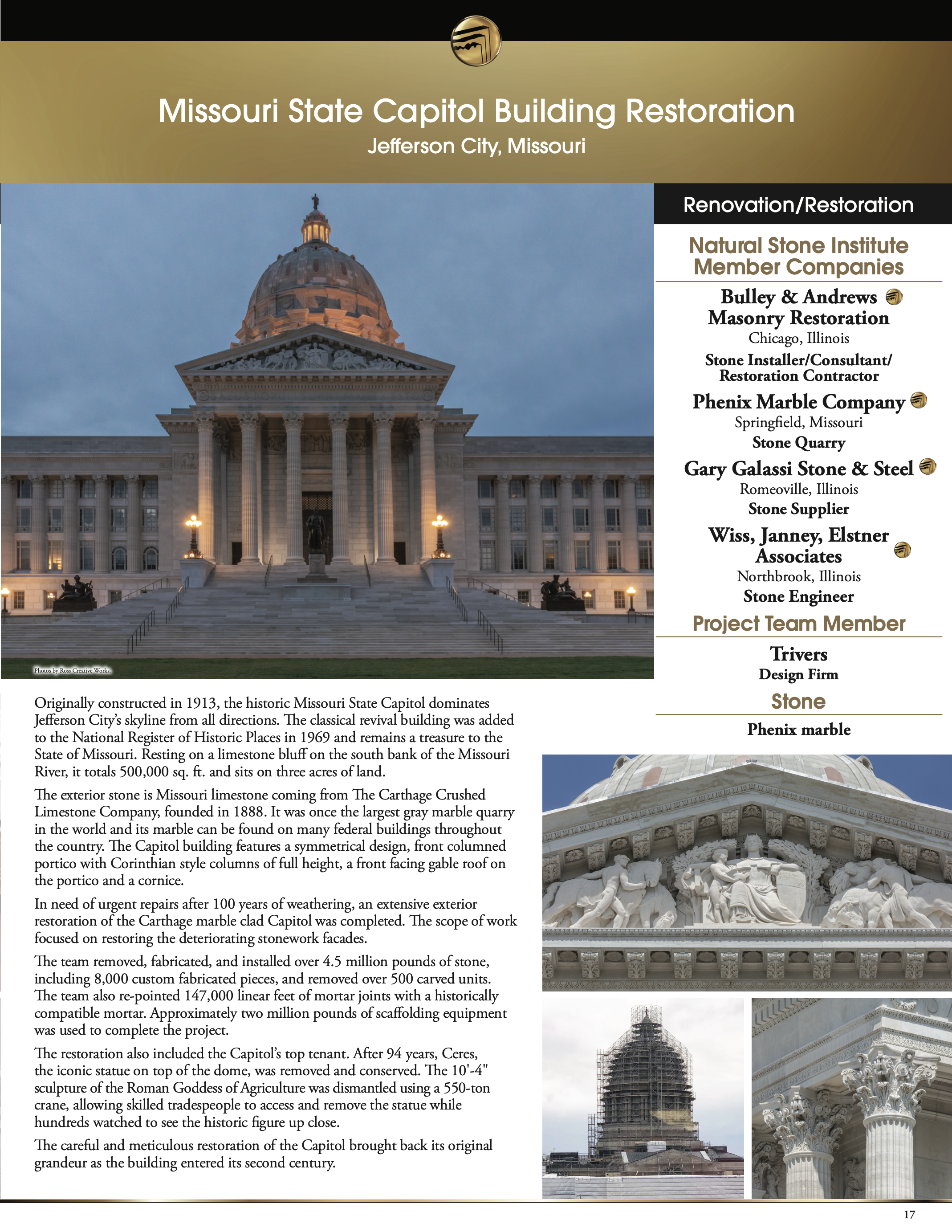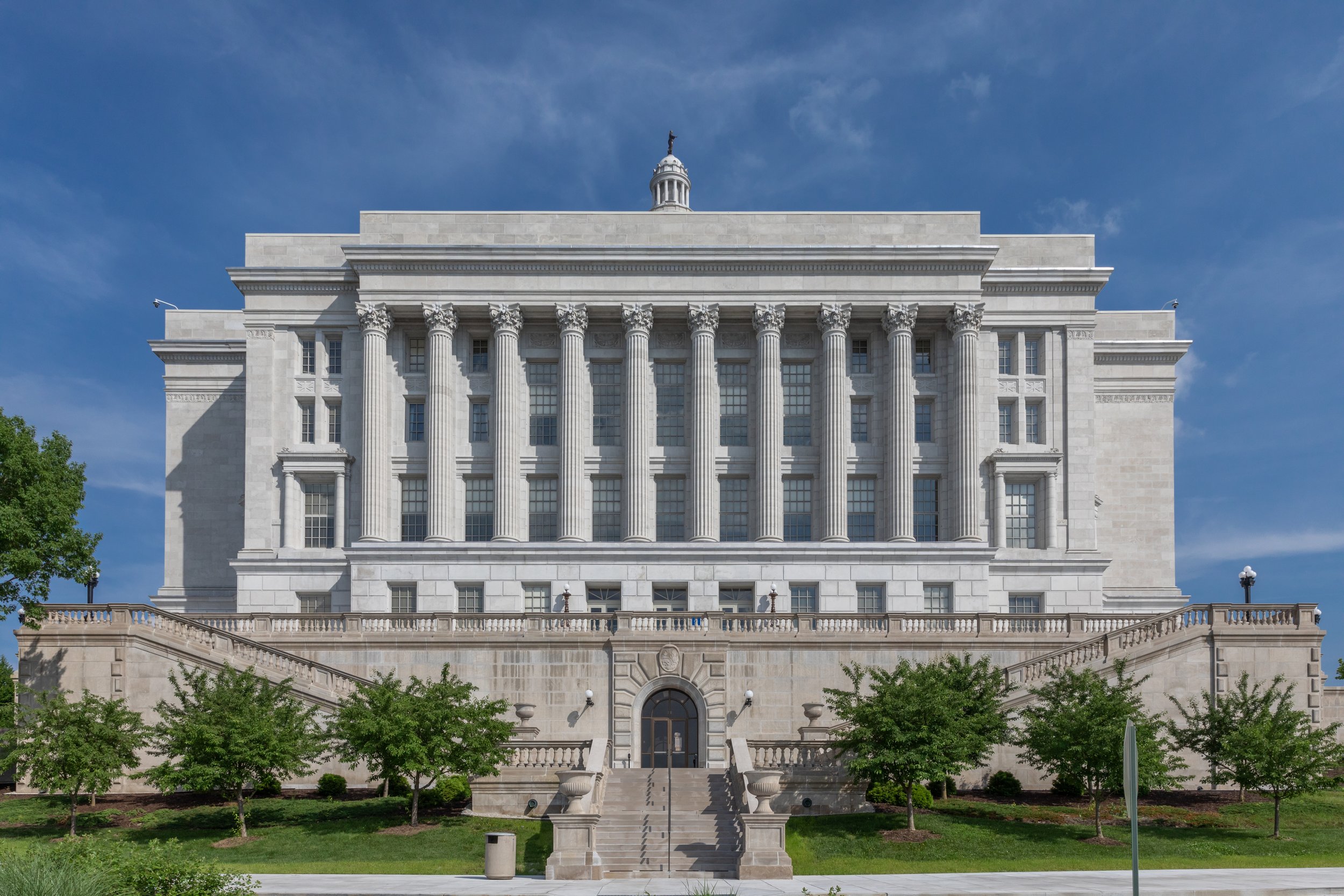The Natural Stone Institute's prestigious Pinnacle Award, honors stone companies around the world for projects that stand out above the rest –Phenix Marble was honored to receive this award for the historical restoration of the Missouri State Capitol.
Originally constructed in 1913, the historic Missouri State Capitol dominates Jefferson City’s skyline from all directions. The classical revival building was added to the National Register of Historic Places in 1969 and remains a treasure to the State of Missouri. Resting on a limestone bluff on the south bank of the Missouri River, it totals 500,000 sq. ft. and sits on three acres of land.
The exterior stone is Missouri limestone coming from The Carthage Crushed Limestone Company, founded in 1888. It was once the largest gray marble quarry in the world and its marble can be found on many federal buildings throughout the country. The Capitol building features a symmetrical design, front columned portico with Corinthian style columns of full height, a front facing gable roof on the portico and a cornice.
In need of urgent repairs after 100 years of weathering, an extensive exterior restoration of the Carthage marble clad Capitol was called for. In 2018, the Missouri State Capitol Commission selected Missouri Phenix Marble as the stone to be used for repairs to the facade of the Missouri State Capitol building. The stone, popularly known as “Napoleon Gray Marble,” is actually a high-quality limestone that was used in the original construction of the Capitol. The scope of work focused on restoring the deteriorating stonework facades.
The team removed, fabricated, and installed over 4.5 million pounds of stone, including 8,000 custom fabricated pieces, and removed over 500 carved units. The team also re-pointed 147,000 linear feet of mortar joints with a historically compatible mortar. Approximately two million pounds of scaffolding equipment was used to complete the project.
The restoration also included the Capitol’s top tenant. After 94 years, Ceres, the iconic statue on top of the dome, was removed and conserved. The 10'-4" sculpture of the Roman Goddess of Agriculture was dismantled using a 550-ton crane, allowing skilled tradespeople to access and remove the statue while hundreds watched to see the historic figure up close.
The careful and meticulous restoration of the Capitol brought back its original grandeur as the building entered its second century.
Learn more about the award here.








